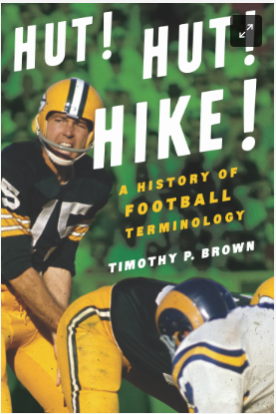The game of baseball has a long and storied history of its players, teams and managers. The stats, the championships, pitching duels and so much more make this one of the most interesting items to study and watch.
Sports History
Phil Rizzuto NY Yankee Baseball Legend
Hank Greenberg Baseball HOF Detroit Tiger
Starting with the Detroit Tigers in 1930, Greenberg's prodigious power soon earned him his nickname. He clubbed 36 homers in 1935, leading the Tigers to a World Series title and claiming his first MVP award. But his success wasn't without shadows. As one of the few Jewish players in the major leagues, Greenberg faced anti-Semitic taunts and prejudice, which only fueled his determination to succeed.
In 1938, Hank's bat went nuclear. He smacked 58 home runs, just two shy of Babe Ruth's record, cementing his place as one of the game's greatest sluggers. He earned another MVP award and propelled the Tigers to yet another World Series appearance, proving his doubters wrong with every thunderous swing.
Greenberg's career saw its share of interruptions. World War II forced him to serve in the Navy, delaying his prime. Yet, upon his return in 1945, he led the Tigers to one more World Series victory, proving his fire still burned bright.
Beyond the statistics, Hank Greenberg's legacy transcends the game. He stood tall against bigotry, paving the way for generations of Jewish players. His on-field dominance, coupled with his unwavering spirit, made him a beacon of hope for millions, his every home run a defiant roar against discrimination.
Retiring in 1948, Greenberg remained involved in baseball as a team executive and advocate for youth sports. In 1956, he earned his rightful place in the Baseball Hall of Fame.
Tony Lazerri HOF Infielder
Jesse Haines Baseball Hall of Fame Curveball Pitcher
Haines' journey to St. Louis was unconventional. After years toiling in the minors, he finally got his shot in 1918, only to struggle initially. However, he honed a knuckleball, a pitch known for its unpredictable movement, and in 1920, he became a fixture in the Cardinals' rotation. Despite a losing record that season, Haines' low earned run average hinted at the talent he possessed.
Haines blossomed in the 1920s, becoming a workhorse for the Cardinals. He led the National League in appearances one year and pitched over 300 innings another. His fiery on-field demeanor contrasted with his gentle personality off the field, creating a unique aura around the pitcher.
1924 saw Haines' defining moment – a no-hitter against the Boston Braves, a feat unmatched by a St. Louis pitcher at home for over half a century. He also played a pivotal role in the Cardinals' World Series victories, winning two games in the 1926 championship run.
Haines' longevity was remarkable. He remained a force even in his late 30s, reaching the 20-win mark three times. Though his fastball waned, his ever-evolving knuckleball kept him competitive. He retired in 1937 at the age of 44, the oldest active player in the majors at the time.
Born July 22, 1893, in Clayton, Ohio, was Baseball Hall of Fame Pitcher Jesse Haines. A World Series Champion in 1926, 31, and 34.
Jesse pitched no-hitter 1924 as a member of the St. Louis Cardinals. Earlier in his career he had a brief stint with the Cincinnati Reds and a few more years in the minor leagues before becoming a Cardinal. Retiring in 1937 with a 210–158 win–loss record, Haines was a coach with the Brooklyn Dodgers in 1938.
Bobby Doerr The Baseball Man Who Silenced Doubts
Playing primarily second base, Doerr's glove was legendary. He won eight Gold Glove Awards, showcasing his remarkable range and instincts. But he wasn't just a defensive specialist. His clutch hitting earned him the nickname "Mr. September" for his late-season heroics. He batted over .300 six times and was vital to the Red Sox's 1946 and 1950 World Series championships.
Doerr's career was challenging. He served in World War II, delaying his playing career. Injuries hampered him later, and he was traded to the Kansas City Athletics in 1959. However, he remained a fan favorite in Boston, returning to the Red Sox organization as a coach and scout after retirement.
Doerr's legacy extends beyond statistics. He embodied class and sportsmanship, earning respect from teammates and opponents alike. He was inducted into the Baseball Hall of Fame in 1988, solidifying his place as one of the greatest Red Sox ever.
Home Run Baker
Despite his individual brilliance, Baker's legacy is intertwined with the success of Connie Mack's legendary Athletics teams. Alongside teammates like Eddie Collins and Chief Bender, Baker was a key contributor to five World Series appearances and three championships (1910, 1911, 1913). His clutch hitting and power were instrumental in the Athletics' dominance.
Despite playing in a low-scoring era, Baker finished his career with 96 home runs, a significant accomplishment for his time. He was inducted into the Baseball Hall of Fame in 1952, a testament to his impact on the game.
Home Run Baker's story serves as a reminder of the forgotten heroes of baseball's early eras. While his feats may not translate as directly to the modern game dominated by home runs, his power hitting in a low-scoring era deserves recognition and left his mark on baseball history.
John Ward A Baseball Pioneer Beyond the Diamond
Born in 1860, Ward's athletic prowess emerged early. He debuted as a pitcher for the Providence Grays in 1878, leading the league in wins at the young age of 18. The following year, he etched his name in baseball lore by throwing the second-perfect game in history. However, a lingering arm injury forced him to transition to positions like shortstop and second base, showcasing his remarkable versatility.
Ward's offensive contributions were equally impressive. Over his 17-year career, he compiled a solid batting average of .275, amassing over 2,100 hits and 1,400 runs scored. More importantly, he captained the Brooklyn Ward's Wonders to a successful season in the Players' League, a short-lived competitor to the established National League.
Beyond the diamond, Ward's influence extended far and wide. He became a player-manager in 1880, demonstrating his leadership skills and paving the way for future players to take on similar roles. He also pursued a law degree, later using his legal expertise to fight for better player contracts and challenge the restrictive reserve clause that bound players to a single team. This paved the way for the formation of the first players' union, a testament to Ward's commitment to player welfare.
After retiring from baseball in 1894, Ward continued his impactful career. He represented players against the National League, served as president of the Boston Braves, and even ventured into the world of golf, where he achieved significant success.
The Enduring Legacy of Jud Wilson
Wilson's journey began with the Baltimore Black Sox, where he quickly established himself as a star. His debut season saw him hit a remarkable .390 and lead the team in home runs, earning him comparisons to the legendary Babe Ruth. Throughout his career, he played for several powerhouse teams, including the Homestead Grays, Pittsburgh Crawfords, and Philadelphia Stars, all of which achieved championship titles during his tenure.
Beyond his team's success, Wilson's accolades paint a vivid picture of his dominance. He achieved a staggering batting average of .351 over his career, ranking him among the top five hitters in Negro League history. He even reached the elusive mark of hitting .400 three times, a feat achieved by only a handful of players in the league's history. His power was undeniable, with estimates suggesting he hit over 200 home runs throughout his career.
Wilson's impact extended beyond his statistics. He was known for his fierce determination and competitive spirit, which earned him the respect of his peers and instilled fear in opponents. He was also a vocal advocate for the rights of Negro league players, fighting for equal opportunities and recognition in a segregated society.
Despite his immense talent, Wilson, like countless other Negro league players, never had the opportunity to compete in Major League Baseball due to racial discrimination. Yet, his contributions to the sport are undeniable. He was inducted into the National Baseball Hall of Fame in 2006, a testament to his exceptional talent and enduring legacy.
Jud Wilson's story is not just about baseball; it's a testament to perseverance and the fight for equality. His remarkable career serves as a powerful reminder of the immense talent and contributions of Negro league players who were denied the opportunity to showcase their skills on the biggest stage.
Bob Boone Legendary Player/Manager
Defensive Stalwart:
Boone established himself as one of the best defensive catchers of his era. He won a prestigious Gold Glove Award seven times, a testament to his elite framing skills, exceptional throwing arm, and game-managing abilities. His defensive contributions were crucial for the teams he played for, including the Philadelphia Phillies, where he was a key figure in their 1980 World Series victory.
Solid Hitter, Valuable Teammate:
While not known for his power hitting, Boone was a consistent offensive contributor. He finished his career with a respectable .254 batting average, 1,838 hits, 105 home runs, and 826 runs batted in. More importantly, he possessed a valuable skillset for a catcher, including a good on-base percentage and the ability to handle a variety of pitching styles.
Al Lopez Baseball Hall of Fame Manager and Player
Lopez's playing career spanned 19 seasons, from 1928 to 1947. He donned the catching mitt for four teams – the Brooklyn Robins/Dodgers, Boston Bees, Pittsburgh Pirates, and Cleveland Indians. While his offensive statistics weren't eye-popping, he was a defensive stalwart. He holds the major league record (since broken) for most games caught (1,918) and was known for his calmness behind the plate, expertly handling a variety of pitching styles. Nicknamed "El Señor" for his gentlemanly demeanor and Spanish heritage, Lopez earned the respect of his teammates and opponents alike.
However, Lopez's true legacy lies in his managerial career. After a brief stint in the minor leagues, he took the helm of the Cleveland Indians in 1951. What followed was a remarkable stretch of success. In 15 full seasons as manager, Lopez's teams never finished lower than second place and never had a losing record. This consistency was unheard of at the time, showcasing his exceptional leadership skills.
His crowning achievement came in 1959 with the Chicago White Sox. Despite a lack of power hitters, Lopez instilled a "Go-Go" style of play with an emphasis on speed and base stealing. This unconventional approach, coupled with strong pitching, led the White Sox to their first American League pennant in 40 years. Though they fell short in the World Series, Lopez's feat cemented his reputation as a tactical innovator.
Beyond wins and losses, Lopez fostered a positive environment for his players. He was known for his loyalty and dedication to his teams, creating a sense of camaraderie that fueled their success. He also played a pivotal role in the integration of baseball, managing future Hall of Famers like Minnie Minoso and Luis Aparicio.
Legendary Baseball Hall of Fame player and manager Al Lopez. Born August 20, 1908, in Tampa, Florida, was Baseball Hall of Fame inductee Al Lopez.
He played in Major League Baseball (MLB) for the Brooklyn Robins / Dodgers, Boston Bees, Pittsburgh Pirates, and Cleveland Indians between 1928 and 1947, and was the manager for the Cleveland Indians and the Chicago White Sox from 1951 to 1965 and during portions of the 1968 and 1969 seasons.
Lopez is one of the top MLB players to have worn Jersey Number 12.
February 7 Jersey Numbers

Here are some jersey numbers in team sport history that stuck out. February 7, 1949 - Number 5, Joe DiMaggio became the first ball player to earn $100,000 a yearas he did so under contract with the New York Yankees . February 7, 1958 - The Brooklyn Dodgers official...
- The use of a "banner" counts as 10 words!
February 6 Jersey Numbers
Sports history is made every day of the year. We will preserve at least a small sampling from some great athletes every day based on the uniform number they wore. 31 - 9 - 14 - 83 - 7 - 16 - 22 - 80 - 11 - 84 - 10 - 83 - 12 February 6, 1926 - St Louis Browns acquire catcher Wally Schang from ...
February 5 Jersey Numbers

Here is what happened in Sports Jersey History on February 5: Kareem hits a new NBA high, Hines hauls in a big one and Bob Douglas is honored. Our Sports Jersey Take of the Day is from historian Joe Ziemba. Listen in to learn more about sports history along with me from the unif...
- The use of a "banner" counts as 10 words!
The Oregon Agricultural Hard Court Stars
(image) Members of the 1922 Oregon Agricultural College men's basketball team. From left to rightː Gill (forward), Hjeite (enter), and Feraley (forward), from February 5, 1922. This image is courtesy of Wikimedia Commons. We know the OAC by a different name today, Oregon State. The Oregon Ag...
The 1897 Strathcona Hockey Team
.jpg?https://jerseydispatch.com/pfeL/p/c312642c0431e75b485e432232c99c1c/website/Sports-History-Photo-of-the-Day/February-Images/February-4-Image/images/.Strathconas_First_Hockey_Team_(21879505322).jpg)
Formal portrait of Strathcona's First Hockey Team (1897). Stratchcona resides in British Columbian Province, and is the oldest residential neighbourhood of Vancouver, (image) Some players are labeled by number. 1. Bob Blain 2. Jim Blain 3. Billy Sharkles 4. Fred Richards 5. J. McIn...
- The use of a "banner" counts as 10 words!
February 4 Jersey Numbers

Here is what happened in Sports Jersey History on February 4 : We talk about the great goaltending of Grant Fuhr and Ray Durbin of Row One Brand stops by to to discuss two of his favorite number 40s. Listen in to learn more about sports history along with me from the uniforms and jers...
- The use of a "banner" counts as 10 words!






